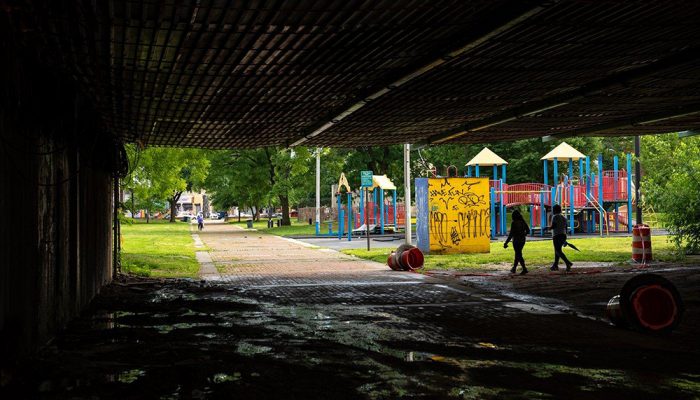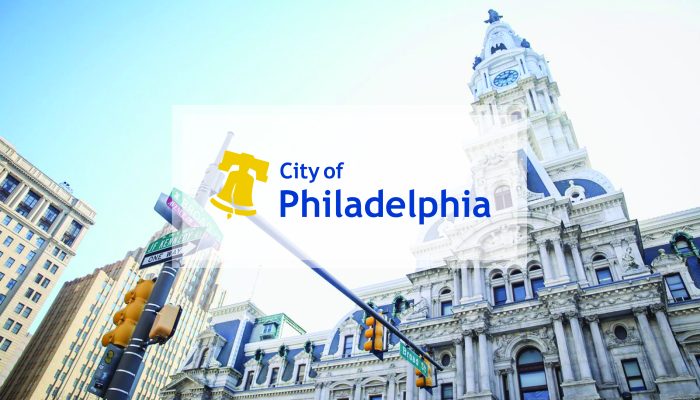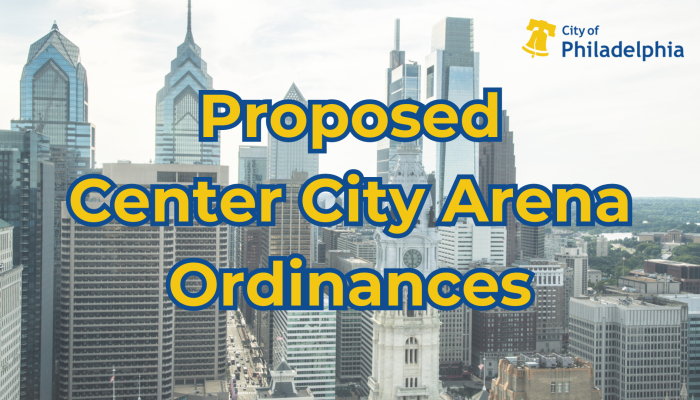Photo above: A Roosevelt Boulevard Extension overpass in Nicetown
On July 12, 2021, Eleanor Sharpe offered testimony on the Reconnecting Communities Act at a hearing hosted by U.S. Representative Dwight Evans (PA). Her testimony is below.
Good afternoon Representative Evans and the other local, state, and federal officials who have joined us here today. My name is Eleanor Sharpe, and I am the Deputy Director for Planning and Zoning in the Department of Planning and Development.
I also serve as the executive director of the Philadelphia City Planning Commission. In that role I am familiar with the impact the highways we built have had on Philadelphia, its neighborhoods, and its residents.
Perhaps the most egregious example is less than one block from here, the Vine Street Expressway. Officially I-676, the Expressway is a gash just north of Center City, our central business district.
The highway’s greatest impact has been on the residents and businesses of Chinatown. Chinatown was already constrained to the south and the east. The expressway created an almost insurmountable barrier to business and residential expansion to the north.
Perhaps most indicative of the highway’s impact is that Chinatown’s “open space” is a small plaza on an overpass. When the plaza was dedicated news reports said that it would serve as a gathering place for nearby low-income seniors. A gathering place – on a highway overpass.
If I-676 is the most egregious example, it is not the only one.
The Roosevelt Boulevard Extension – US Route 1 – cuts North Philadelphia neighborhoods in half. Especially affected is Nicetown. In Nicetown the highway divided the community, displaced residents and businesses, and then was used to justify even more displacement a few years later. In that neighborhood the highway creates a dark, dank tunnel on what should be the community’s Main Street.
I-95 separates tens of thousands of residents from the Delaware River waterfront. Thousands of rowhomes of working-class families in neighborhoods north and south of Center City were destroyed to build it. Notably, the wealthier residents of Society Hill were able to get the section of the highway near them below grade, while wealthy residents of New Jersey were able to stop it altogether.
The power of privilege in the development of our highway system is palpable. In Nicetown, a less destructive route was rejected because it would have cost $4-6 million more. In Society Hill, $9 million was spent to build a cap over two-and-a-half blocks of I-95.
Highways have impacted more than homes and businesses. Runners, bikers, and picnickers in West Fairmount Park must compete with the din of I-76, the Schuylkill Expressway. Construction of the expressway required acres of parkland, the destruction of a lake and of a Fairmount Park mansion. It was, Mayor Richardson Dilworth said, “the worst mistake in my administration.”
Highways in Philadelphia devastated communities even when they weren’t built. Plans for a Crosstown Expressway on South Street collapsed property values and led to blight in Black and white neighborhoods alike.
Fixing these mistakes is expensive. Capping one block of I-95 and creating a park to connect residents to the river will cost over $225 million.
The Reconnecting Communities Act and the funding that it brings can help communities across the country undo the mistakes of the past. It can help restore equity to neighborhoods that in some cases were targeted for destruction. It can help municipalities turn blighting influences into homes, businesses, and open space.
Thank you for the opportunity to appear here today and to contribute to this important discussion.




